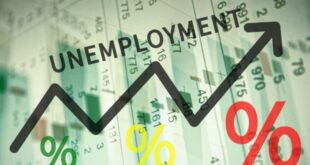The region’s manufacturing sector has been growing for more than one year without interruption, but there could be some bumps in the road, or worse, during the next 12 months. Much will depend on whether inflation is held in check.
Inland Empire manufacturing appears to be in good shape heading into 2022.
The sector just recorded its 16th consecutive month of growth in December, according to the Institute of Applied Research and Policy Analysis at Cal State San Bernardino.
That’s not a record, but it’s an impressive run, particularly considering that it includes the worst of the pandemic, which exploded in the United States in 2020.
The December report also closed 2021, a difficult year economically in a many ways, on a positive note.
The last time the institute’s purchasing managers index showed a decline in manufacturing output was July 2021, when the pandemic caused the index to drop to 42.9, a drop of 12.8 from June 2020.
Forty two point nine was one of the lowest numbers recorded in the 23-year history of the index, but it rebounded quickly – back to 53.4 two months later. Since then, the index has stayed above 50 – the number that determines growth or decline – usually without much difficulty.
A 16-month winning streak leading into the new year is reason for optimism. An even bigger reason might be that the worst of the global supply chain crisis, which was brought on primarily by a shortage of workers caused by the pandemic, might be behind us.
CNN, citing a recent report by the Institute of Supply Management in Tempe, Ariz. reported that the institute’s backlog orders index fell to 61.9 in November, down from a record 70.6 six months earlier.
In other words, backlogs are still growing, but a slower pace. Supply delivery rates are also improving, albeit at a slow pace.
The improvement in delivery times is encouraging because it is happening despite increases in new orders production and shipments, CNN reported.
“It does seem like the supply chain issues are working themselves out, although it’s happening very slowly,” said Barbara Sirotnik, director of the institute and a co-author of the monthly purchasing managers index. “We’ll be able to assess that a lot better in six months, but right now it does seem to be getting better, and that’s huge.”
Sirotnik predicts that the index will stay above 50 “for awhile,” but she declined to be more specific than that. There are too many problems, including inflation and not enough workers, to be too optimistic about Inland manufacturing in 2022, she said.
Twenty twenty-one will be remembered as the “Great Resignation” because so many workers quit their jobs during that time, and that will probably have an impact on manufacturing sometimes, Sirotnik said.
“We’ve been growing, but my crystal ball tells me things might not be as good as they appear to be,” Sirotnik said. “The Omicron variant might not be as bad as we thought it would be, but I think it will still be a factor.”
An even bigger factor could be inflation, Sirotnik said.
“People are having to spend a lot more money to buy materials to fill orders, and the extra costs, of course, are being passed along to the consumer,” Sirotnik said. “Some of them are having trouble filling orders.
They’re also not optimistic about the immediate future.
When asked how they believed the next three months are likely to play out, the purchasing managers surveyed in the December index only 20 percent said they expect the Inland economy to get stronger during the next three months. Thirty six percent said they expect it get weaker during that time, while 44 percent said they expect it to remain the same.
Put another way, 80 percent don’t expect the economy to get better in next three months, a pessimism that was reflected in some of the anonymous comments made by those surveyed:
- “We are seeing weakness in market conditions causing our customer base to limit orders in anticipation of further price drops.”
- “Worse than previous COVID year.”
- “Lower this year than previous months. Seems decrease at a % is larger than previous years.”
- We are usually overwhelmed with orders toward the end of the year.
- This year, we are on a normal production schedule. Hoping this is not a sign of decline in sales.”
- “December has been the same in terms of orders but we do not have raw goods to support production.”
One of the purchasing managers who participates in the monthly survey says he’s looking forward to 2022.
“I don’t want to give out a lot of numbers, but we already half the number of sales that we had last year,” said Bud Weisbart co-owner of A&R Tarpaulins in Fontana, which makes protective coverings, mostly for aerospace clients. “A lot of manufacturers have had to refocus and find other things to make, but we haven’t had to do that.”
The next 12 months should be good for manufacturing if the price of raw materials stay down, according to Weisbart.
“Inflation is the one thing I’m really concerned about,” Weisbart said. “The Federal Reserve has said there could be as many as four interest rate hikes this year, and if that happens it would really affect retail. But if prices stay down we should be all right.”
 IE Business Daily Business news for the Inland Empire.
IE Business Daily Business news for the Inland Empire.


